Entries tagged with “ACM”.
Did you find what you wanted?
Wed 30 Dec 2015
Posted by admin under Asbestos, Dust, Ethics, Exposure, Hazard Communication, occupational hygiene
Comments Off on Asbestos – same hazard, new disease
It’s probably not a new disease, but there are more cases being discovered for type of cancer called, peritoneal mesothelioma. This cancer is found in the stomach, and is cause from eating asbestos (probably not on purpose, but through the body’s normal ability to capture particulates). They are calling this cancer the “third wave”, in addition to asbestosis and mesothelioma (in lungs).
The Center for Public Integrity released a video and article on a dramatic case, Kris Penny, on Dec 17, 2015. NPR picked it up and posted it here. Hopefully more people will be aware of this type of cancer and it can be better reported/diagnosed.
In a related article, from Newser, they suppose this type of cancer is from home exposures, rather than occupational. This information was based upon Australia’s Asbestos Safety & Eradication Agency‘s 2015 report.  They claim:
- 40.64% (568) of people had exposures from non-occupational exposures (they are self reporting for the Australian registry).
- 20% (280) of all registration of exposure were women.
- 62.6% (876) of reported exposures were under the age of 49
- The “third wave” of asbestos exposures will be from DIYs
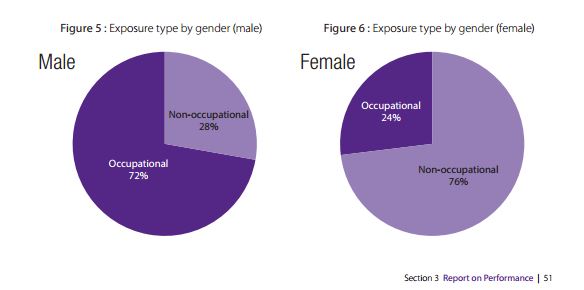
Unfortunately new exposures are still occuring, especially in developing countries. There is an effort to stop asbestos use in these countries, and you can join one group, Global Alliance Against Asbestos.
Tue 17 Jun 2014
Posted by admin under Admin Controls, Air Monitoring, Asbestos, Building Survey, Carcinogen, Chemical Exposure, Exposure, Hazard Communication, occupational hygiene, Risk, Uncategorized
Comments Off on How do I know if I’m disturbing asbestos?
This question gets asked a lot, and in many different ways. Such as:
- Will I get hurt if I touch asbestos? (aka: How long can I be exposed?)
- What if I have done siding removal/cutting pipe/removed TSI (etc)Â on an asbestos containing product, am I safe?
- If I am only doing going to do touch asbestos for 20Â minutes (or ___ time), will I still be in compliance?
- I am disturbing less than 3 square feet of asbestos, I can do this legally, right?
The answer is: Â it depends.
Or, an alternative answer:Â if you think you are disturbing asbestos; you’d better verify (by performing an air sample).
Nowadays there is no excuse for exposing employees, tenants, neighbors to asbestos. And, really, if you are working with asbestos, you need to be extra diligent to inform everyone about the hazard. The worst situation isn’t from a single exposure to asbestos, or an OSHA fine. The worst situation is this:  when you don’t pre-plan, and then verify your exposure levels. Because, someone will make up a worst case scenario, and at that point, you are already behind.
Fri 4 Jan 2013
Posted by admin under Air Monitoring, Asbestos, Building Survey, EPA, industrial hygienist, Lead, Risk, Training
Comments Off on Asbestos Building Inspectors (AHERA)
If you have a building built pre 1985 (I know this date can be different, but I’m playing it safe) before bidding a project you need to have an asbestos survey performed, called a building inspection.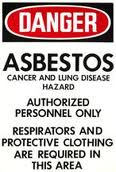 Honestly, they usually aren’t done before bidding. SOMETIMES, they’re performed before starting the work (not good).
Honestly, they usually aren’t done before bidding. SOMETIMES, they’re performed before starting the work (not good).
How do you find a good building inspector? …Google?, Yellow pages (who does that anymore?) Abatement contractor?
Whomever you hire, make sure they have a current AHERA Building Inspector Certificate. This is a Federal program maintained by TSCA Title II EPA AHERA/ASHARA Model Accreditation Program. This is your only recourse if something goes wrong. It doesn’t matter if have have a PhD, CIH, ROH, CSP and MBA, they MUST have a current AHERA Building Inspector Certificate.
Here are some things to consider:
- Does the Building Inspector have a current certificate?
- Will they sample for asbestos?
- Which lab will they use for analysis? Their own? (not always a bad thing)
- Which areas are they unable to access in the building?
- Will they check for leaded paint?
- Will they take pictures?
- How long till you will get the results & report?
- Will they write a report?
- Are they capable of performing air monitoring? (worth asking, but not a deal-breaker)
- Will they look back at previous records / management plans?
- Cost?
Good luck in your search. As most things, a good referral from a friend is probably a great starting spot.
Wed 21 Nov 2012
Posted by admin under Asbestos, Carcinogen, EPA, Federal OSHA, Hazard Communication, OSHA, Training, Uncategorized
Comments Off on What is disturbance of asbestos?
When training people who work around asbestos I usually discuss the word “disturbance” for a LONG time. The reason is simple. If you avoid “disturbing” it, you avoid most of the health issues.
As most people are aware, asbestos is found in many types of materials. Floor tiles, popcorn ceilings, wall panels, etc.
Disturbance relates to the specific activities you perform AND the type of material the asbestos is in.
If the asbestos containing material (ACM) is non-friable, then in theory, it takes more effort to disturb the asbestos. If the material is friable, well, you need to be REALLY careful. – and in some cases, breathing can disturb it. For example, an electrician who uncovers an ancient acoustical ceiling panel and finds damaged asbestos pipe insulation laying on top of it…is probably already in trouble. He has essentially disturbed friable asbestos by merely moving the panel.
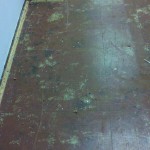 In contrast, a remodeling company installing a floating laminate hardwood over asbestos 9×9 inch tiles (without damaging them) is [probably*] NOT causing airborne releases of asbestos.
In contrast, a remodeling company installing a floating laminate hardwood over asbestos 9×9 inch tiles (without damaging them) is [probably*] NOT causing airborne releases of asbestos.
Most of the OSHA/EPA asbestos rules hinge on the matrix of the material and the activity you are performing on it. The reason is this is what makes the asbestos fiber airborne.
*the OSHA rules are very specific as to work activity, please do your due diligence.
Mon 24 Sep 2012
Posted by admin under Air Monitoring, Asbestos, Management, OSHA, Safety Programs, Training
Comments Off on I have asbestos, but it is less than 1%.
Assume your general contractor reports that he has found a material (floor tile, popcorn ceiling, etc) with less than 1%. He wants you to remove it with the rest of the demolition because, as you know, “…if it’s less than 1%, it’s NOT considered asbestos containing!”.
Are you ok to remove it?
Yes, and no. There is more to consider. The “1% rule” (as it’s called) as it is called states that they only regulate asbestos containing materials if they contain more than 1% of asbestos. Here are a few other considerations:
- OSHA definition. Don’t get stuck on the definition. If you have employees, you must still follow parts of the OSHA rules. At a minimum, you must train your employees, work practices, clean-up and disposal requirments. More details on training here.
- How were the samples taken? If one bulk sample shows less than 1% asbestos, you still might have a problem. According to the EPA/AHERA sampling rules, some types of materials must have up to 7 samples taken. This rule is in place because, back in the day, asbestos was added to joint compound (or anything similar) and it could really vary in amount according to where you take the sample. In addition, OSHA does not allow for composite sampling (combining the layers).
- Do you know that 0.99% asbestos is still bad for you? Asbestos is a carcinogen. The greater the exposure, the greater the risk of disease. Any exposure could be the one to cause the disease. If the material is friable and you are disturbing it, I would NOT recommend performing that activity. Hire an abatement contractor.
- Finally.Let’s assume it’s non-friable, you are not going to disturb it (when removing it) and it’s less than 1%. What will you do if your neighbor next door decides to call OSHA/EPA? Do you have a written plan and procedure? Have your employees been trained on the hazard? How to remove it? How to dispose of it? …Sometimes bad publicity will get you in worse trouble than any monetary fine.
 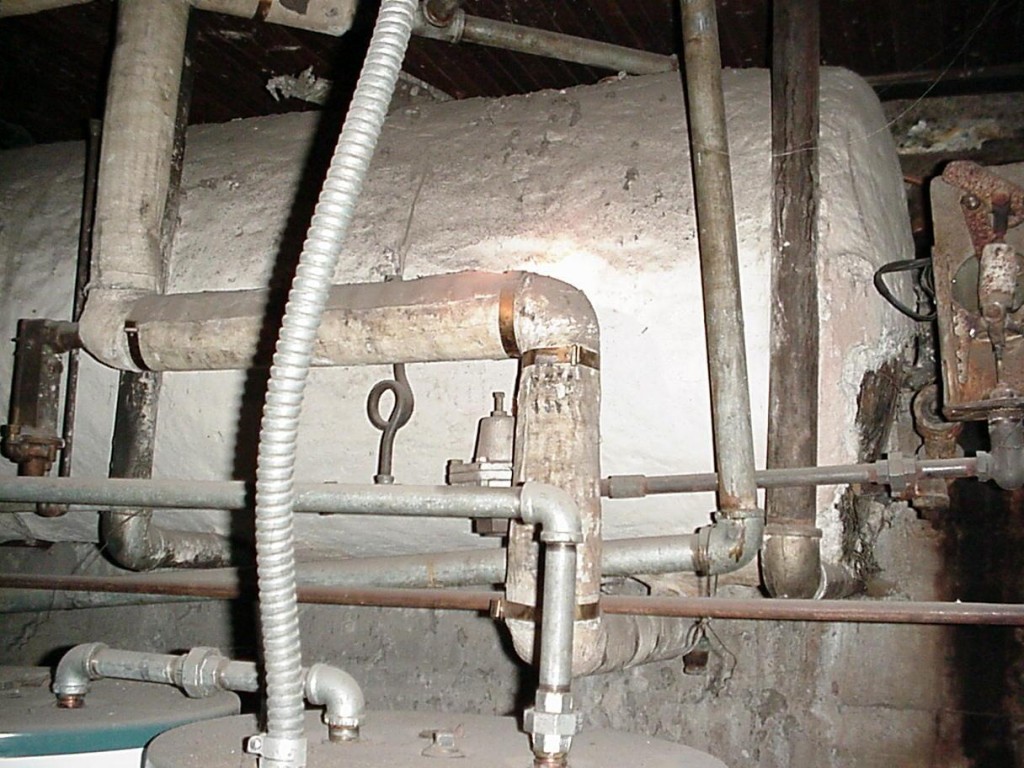
Wed 18 Jul 2012
Posted by admin under Air Monitoring, Asbestos, Building Survey, Hazard Communication, Management
Comments Off on What if you’ve had asbestos exposure?
 Occasionally (actually, far too often), I hear from a subcontractor who was told by the General Contractor (or owner) there is no asbestos onsite. Then, after they have been working for a month they find out it actually IS asbestos, and they were disturbing it. What do you do?
Occasionally (actually, far too often), I hear from a subcontractor who was told by the General Contractor (or owner) there is no asbestos onsite. Then, after they have been working for a month they find out it actually IS asbestos, and they were disturbing it. What do you do?
The first thing to do is stop work. Do not try to clean it up. Call an abatement contractor. They will identify the asbestos onsite, clean it up, and provide an airborne clearance test.
Next, you will need to provide awareness training (or better, let the abatement company provide it). Ideally this will occur on the day you start back working. Train everyone onsite about asbestos.
Finally, you (as the safety manager), need to identify and characterize the exposure to the employees. It should probably be a formal letter written to the owner, general contractor and employees.
Here are some tips on writing the letter:
- include employee names, work hours, type of work, PPE worn, and locations they were working
- describe the asbestos. Amount found, locations, type, estimated amount disturbed.
- describe remedy process and steps taken. Names of GC, owner, abatement company, airborne levels found. Who was trained afterwards.
- describe how things will change in the future. Here’s a tip: Â any building before 1985 WILL have a building survey performed for asbestos….in writing.
Really, one exposure to asbestos is probably* not enough to contract a disease (asbestosis, or mesothelioma). It will take 15-30 years for symptoms to appear. But, it might be worth the “goodwill” to send affected employees into a occupational health doctor for a check up. The physician will reassure the employee and may provide some comfort.
*asbestos is a carcinogen. Greater exposure = greater chance of cancer. no amount is safe.
Mon 16 Apr 2012
Occasionally I hear of certain (construction) trades having to touch asbestos. Usually it is an electrician, sheetmetal worker, carpenter, or plumber.
How it usually happens is that they have a small remodel/install/repair. They must cut through the asbestos to install the item (duct work, electrical, plumbing). Be careful. If you look at OSHA’s definition you may not be able to perform this type of work without specific training. In some cases, 16 hours of asbestos-specific training!
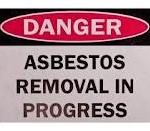 If you work with any type of asbestos (or, are even near it) you must have Class IV (4) training. This is a 2-hour training which is defined as, “…contact, but DO NOT disturb asbestos…”. As a contractor, you want to make sure you fall under this type of training. The alternative is,
If you work with any type of asbestos (or, are even near it) you must have Class IV (4) training. This is a 2-hour training which is defined as, “…contact, but DO NOT disturb asbestos…”. As a contractor, you want to make sure you fall under this type of training. The alternative is,
Class III (3) training. This type of training where employees are, “likely to disturb” asbestos. Â If you think you disturbed asbestos in your activities, you REALLY should prevent it. Here are some suggestions for making sure you never disturb asbestos.
- Always, always get (in writing) a building survey for asbestos (and leaded paint) before performing work
- Train your employees in how to recognize asbestos, etc. (Class IV training as a minimum. See my earlier post)
- Establish procedures for how you will prevent contact with asbestos
If you must touch (and possibly disturb it) asbestos then also,
- Have specific procedures for how you prevent exposure
- Have PPE (including respirators)
- Obtain air monitoring data while you are performing your activities – document that you DO NOT disturb the asbestos
- Dispose of the material properly
Asbestos is one of those hazards you can’t ignore. If you are not doing the correct procedures, it will bite you (a claim, a citation, a lawsuit, horrible PR, or someone getting ill!).



 In contrast, a remodeling company installing a floating laminate hardwood over asbestos 9×9 inch tiles (without damaging them) is [probably*] NOT causing airborne releases of asbestos.
In contrast, a remodeling company installing a floating laminate hardwood over asbestos 9×9 inch tiles (without damaging them) is [probably*] NOT causing airborne releases of asbestos.

